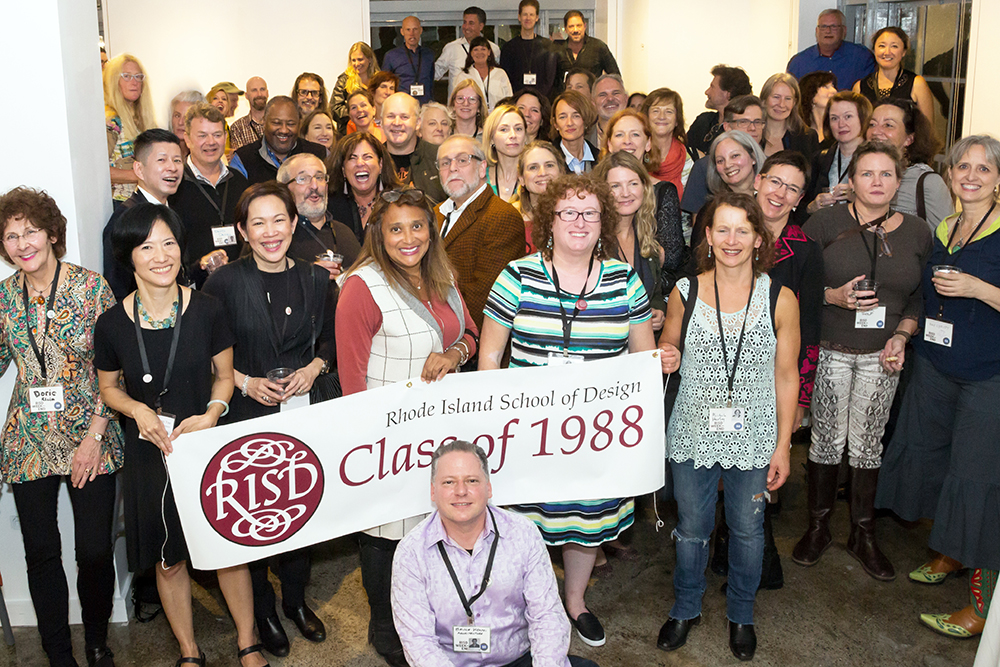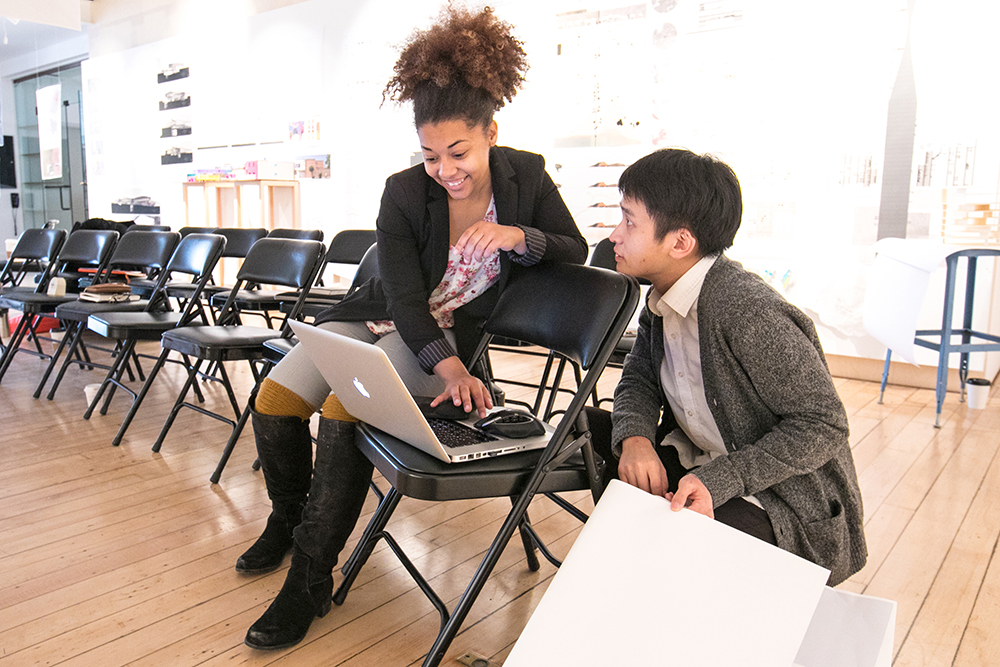
Wavespace
From a Google collaboration to a show in Saudi Arabia, Lachlan Turczan shapes light with water.
Lachlan Turczan 15 FAV can’t recall how many objects he’s lit on fire.
“I think I was known as the guy who would break shit at school,” says Turczan, who in his art practice explores the optical and sonic properties of water.
An early obsession with manipulating water with sound and light led Turczan to light a subwoofer on fire while at RISD in order to experiment with circuit-bending. This led to a senior thesis project that used unburned subwoofers to vibrate water-filled vessels, where he projected light reflected off the water onto screens.
“His use of sound waves to generate visual forms in the medium of water created a simultaneous sense of wonder and simplicity,” former RISD professor Daniel Peltz, who was Turczan’s thesis adviser, wrote in an email from a research residency in Benin, West Africa.
“Lachlan was both serious and playful in his approach. He was self-motivated and clearly invested in experimentation,” Peltz remembered.
This experimentation has led Turczan to show his work, in collaboration with Google, at Milan Design Week in 2023, as well as in an exhibition at Saudi Arabia’s light art festival Noor Riyadh.
Turczan entered RISD convinced he was going to be a painter. He’d spent his Southern California childhood doodling and then, with parental encouragement, had focused on art more intently in a specialized high school. When he arrived at RISD in 2011, he navigated the novel New England chill while starting requirements for the school’s painting concentration.
“I was taking painting classes and making a lot of landscape paintings. The paintings were becoming more and more abstract,” he says. “I was really inter-ested in light and color, and atmospheric phenomena and optics.”
Then Turczan’s second-year painting instructor, Patricia Trieb, insightfully introduced him to the Light and Space movement. Developed in the 1960s, movement adherents used light, space and other nontraditional materials to create immersive and innovative sensory experiences. Turczan began to explore works by Light and Space artists like James Turrell, Helen Pashgian and Robert Irwin, whose works all reflected the open-skied sensibilities of the western United States—specifically, Southern California. Turczan had traveled across the country only to find himself home again, at least conceptually.
“To be clued in to this work felt like a real homecoming to me,” he says. “It was kind of ‘game over’ from there.” He pivoted from his painting practice, which was by then using color to create repre-sentations of light, to working with the medium directly: Turczan spent the rest of his time in college experimenting with how to bend—then sculpt, shape and even hear—light.
“I never have the lightning bolt idea. It’s always thinking through my hands,” Turczan says of his approach. “You put in the hours and, out of the chaos, you find something salient.”
His discovery process ultimately included rabbit-hole excursions into cymatics, which is the study of vibration through liquid, as well as optics, acoustics and hydrodynamics. He did all this under the FAV major, the closest fit available to the direction his art was flowing.
“I knew what I wanted to do: I wanted to use water to shape light,” he explains. “Then the question becomes, How do you shape water? I was in these classes where I’d bring the whole class into the closet. I’d have a spotlight shining on a plate of water.”
Ricardo Nagaoka 15 PH watched Turczan’s artistic journey unfold. Turczan’s best friend since their first year, Nagaoka was there when Turczan first started experimenting with light and water (and setting subwoofers ablaze), and he stuck around as the inquiries grew increasingly elaborate.
“He’s a very obsessive person in the most wonderful way,” says Nagaoka, a photographer. “We were just joking about how he has been obsessed with this one phenomenon for the better part of a decade. That’s what it requires to dig deep and find something interesting and new.”
That subwoofer capstone project was the start of a vision of work that has ultimately led Turczan to a degree of artistic success rarely achieved by young artists.
After graduation, Turczan continued to experiment and refine this vision on nights and weekends while supporting himself as a water choreographer at WET Design in Burbank, California, which creates large-scale fountain installations.
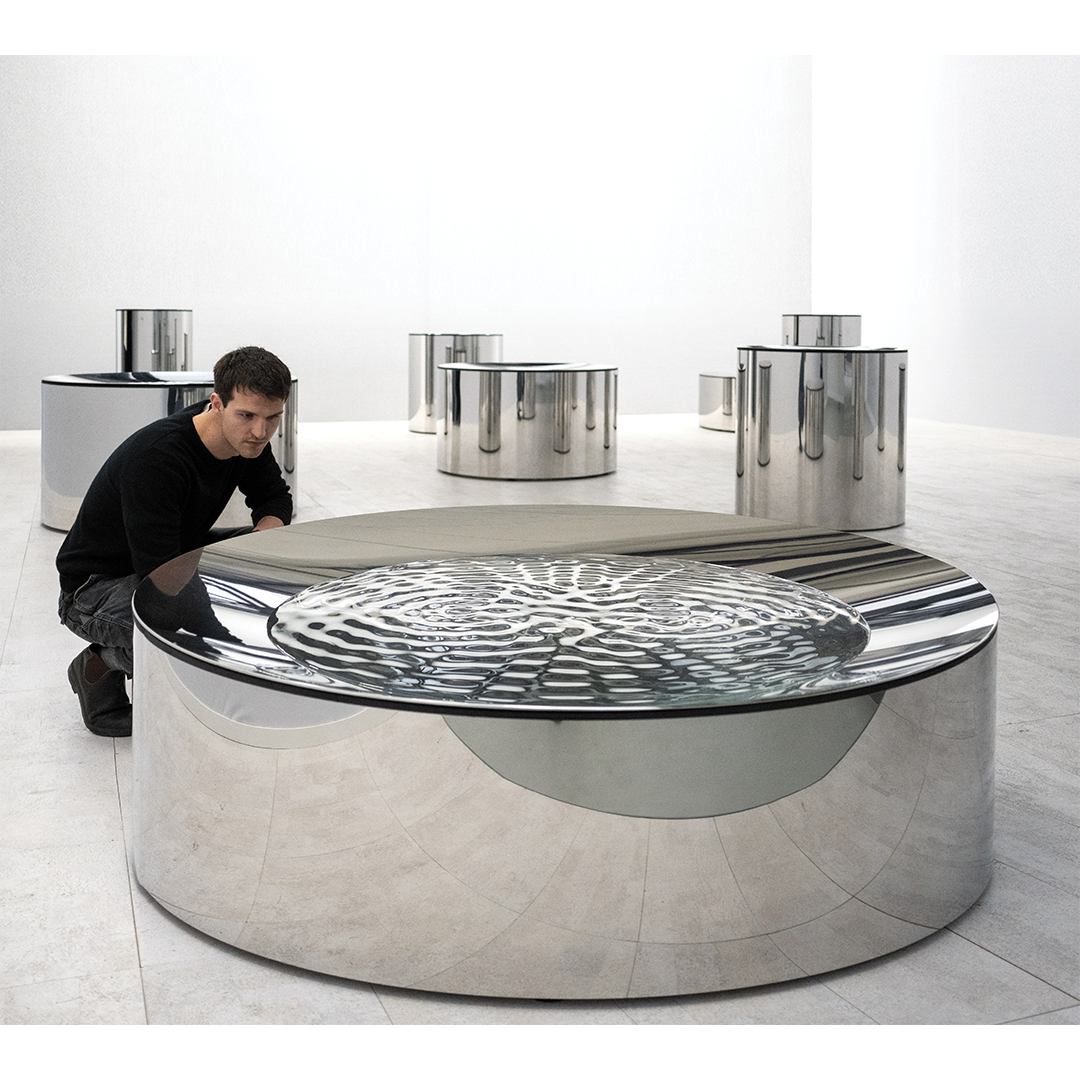
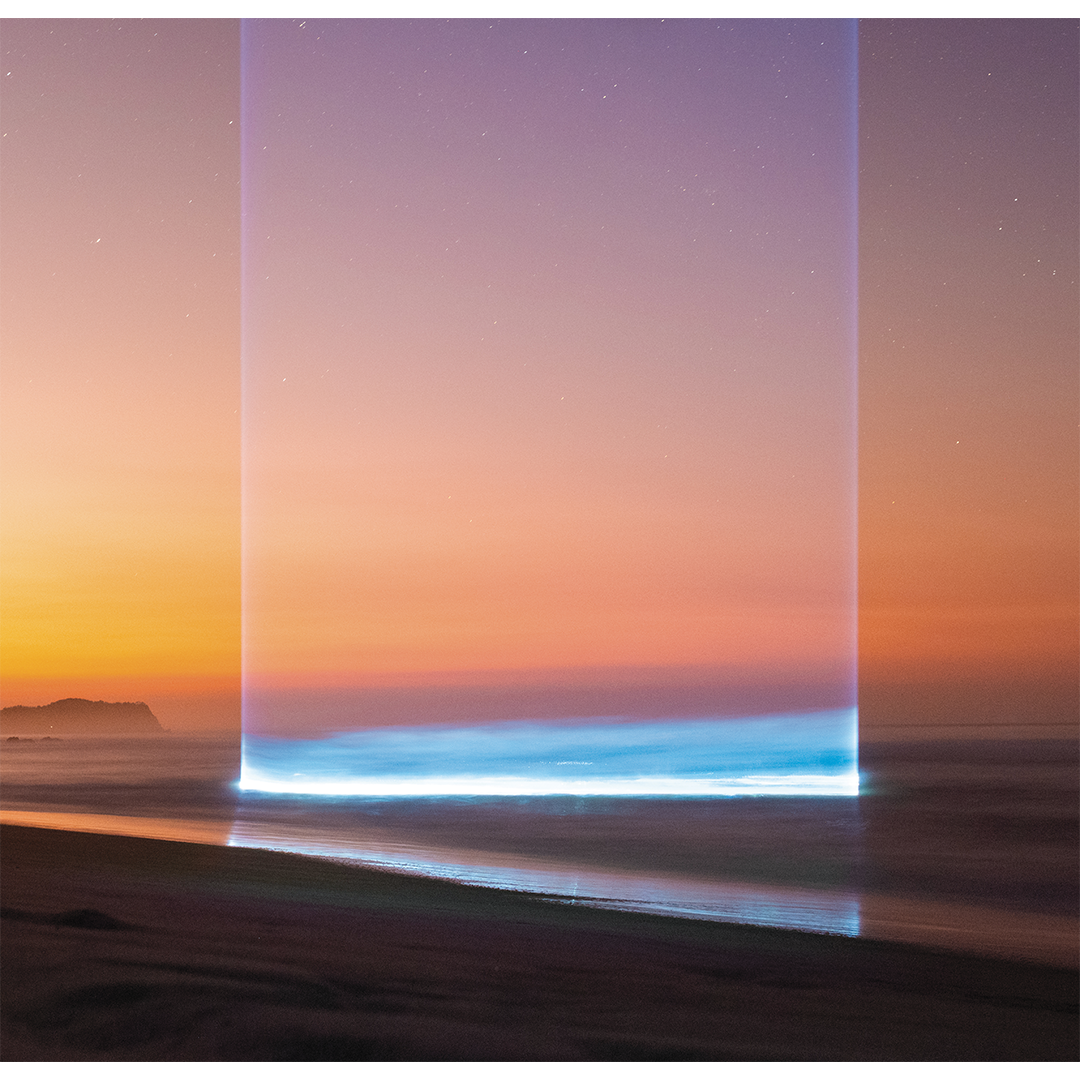
Then, one fortuitous day, Ivy Ross called. Ross, the vice president of design for hardware products at Google, was looking for an artist to collaborate withfor an exhibition at Milan Design Week, the annual design fair attended by over 350,000 people from around the globe. In April 2023, the company was showcasing the design of its latest watch there and, for the third year running, it sought to accompany its own displays with a related art installation. That year’s theme happened to be “shaped by water.”
“We recently launched a watch inspired by water,” Ross says. “By dropping water on a steel plate, it forms this beautiful radius—this bubble or shape—before it breaks, and we used that radius to inform the design of the watch.” Ross wanted to feature an art installation that used cymatics. She initially sought out scientists working in the niche field, only to find that their work lacked aestheticism.
“Then someone on the team sent me a picture of a bowl that Lachlan had made,” Ross says. “I said, ‘Oh my god, that’s beautiful.’ It was pristine and minimal. So I reached out to him entirely blind.”
Turczan, who was in Dubai working on fountain choreography at the time, remembers being stunned by the cold call.
“She was like, ‘I really love your work. Would you like to put this on the world stage?’ I was like, ‘What’s the catch?’ She was like, ‘Well, we’ll fund the work you always wanted to make.’” True to her word, Google set Turczan up with a temporary studio space where he spent over a year, during an Omicron-related delay, working on Wavespace and Sympathetic Resonance, two installations based on the conceptual vision he first debuted in his senior project.
“We were just blown away at how meticulous he was,” Ross says. “He’s so like-minded to me and my design team in terms of how thoughtful he was with every detail.”
The ultimate installation took up two rooms at Garage 21 in Milan. Viewers lingered among the Sympathetic Resonance exhibit to wait for a turn experiencing Wavespace. The first room featured 11 mirrored bowls of different sizes filled with water that hummed with various vibrational frequencies, creating cymatic patterns on the water’s surface.
“We were afraid people would be bored waiting for ten minutes amongst the bowls, but we couldn’t pry people away,” Ross says. “You get in resonance because we are water. Your body starts to almost tune to the same frequency as the patterns you’re witnessing.”
Wavespace featured a bowl surrounded by a circle of custom seating, where viewers watched a ten-minute performance of water reflections moving to music by Maurice Ravel and Nils Frahm reflected onto the ceiling. Viewers couldn’t get enough of the experience; it was voted one of the top three exhibitions at Milan Design Week.
“We had lines out the door that were about an hour long. Some people came back twice,” Ross says. The consensus was that the exhibits put visitors in such an amazing state of mind that they wanted to experience it again. The exposure Turczan gained from his Google collaboration opened numerous doors to his art. He is working on installing permanent versions of Wavespace at two North American locations, and it was featured in Saudi Arabia’s light art festival Noor Riyadh.
Google “provided me with the jump start I have needed to instigate my artistic career,” he says.
For Turczan, who is now deep into experimenting with columns of laser light after a decade focused on LEDs, the desired impact of his work remains unchanged even as his explorations morph: he aims to recreate a wordless, collective experience, akin to a gathering around a campfire, where light is experienced communally and without the uniform mediation of that most ubiquitous of light sources—screens.
“You’re never going to know which way the flame will flicker,” he says. “You place the logs, you hope the fire doesn’t jump out of there too much. But it’s a chaotic phenomenon that is unpredictable, that provides this opportunity for us as humans to be co-collaborators in that experience.”
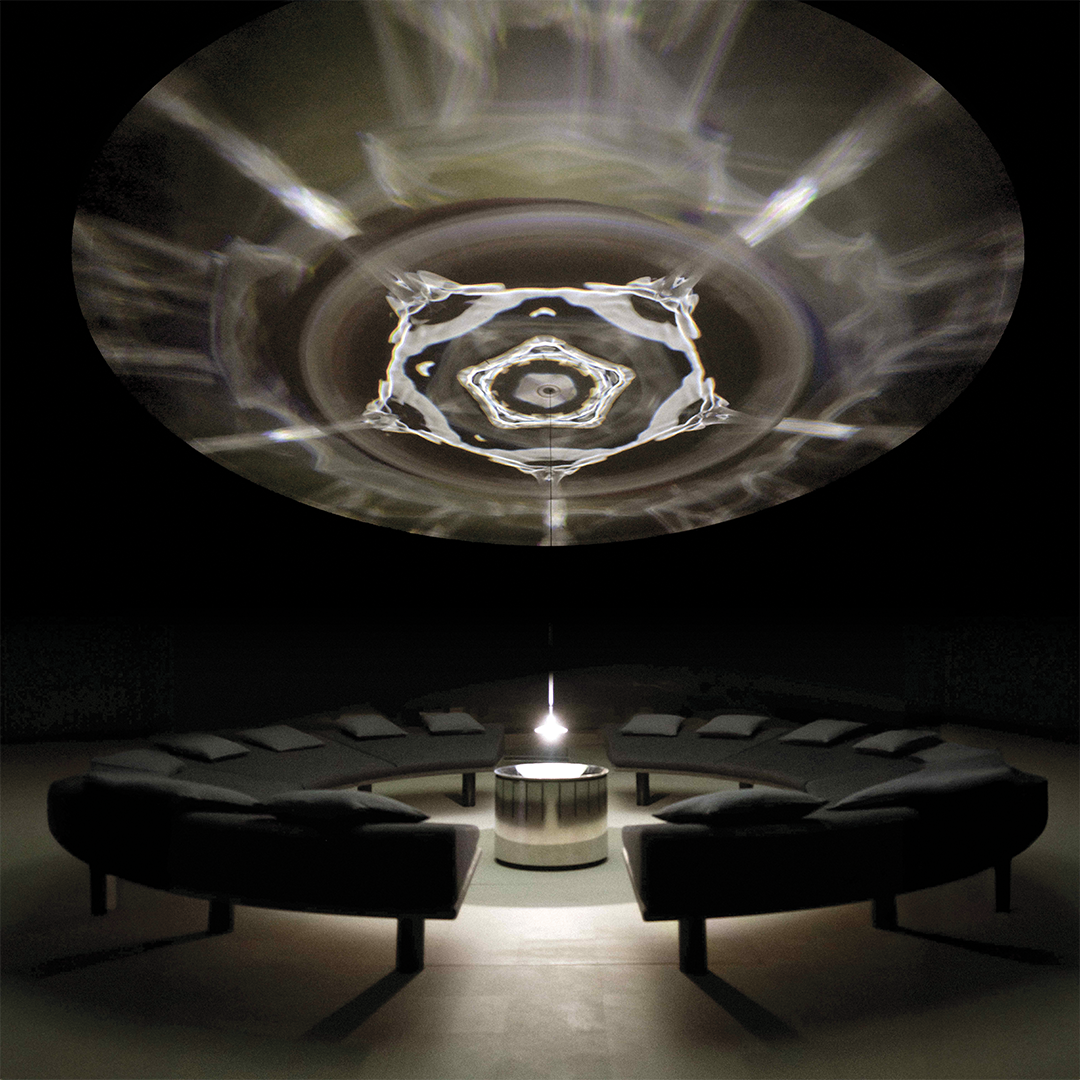
All photos courtesy of Studio Lachlan. Turczan Turczan thanks his collaborative partner, Kevin Izard, whom he met at WET, where Izard was lead engineer. This year, the two formed a studio together.
Words by Kira Goldenberg.

